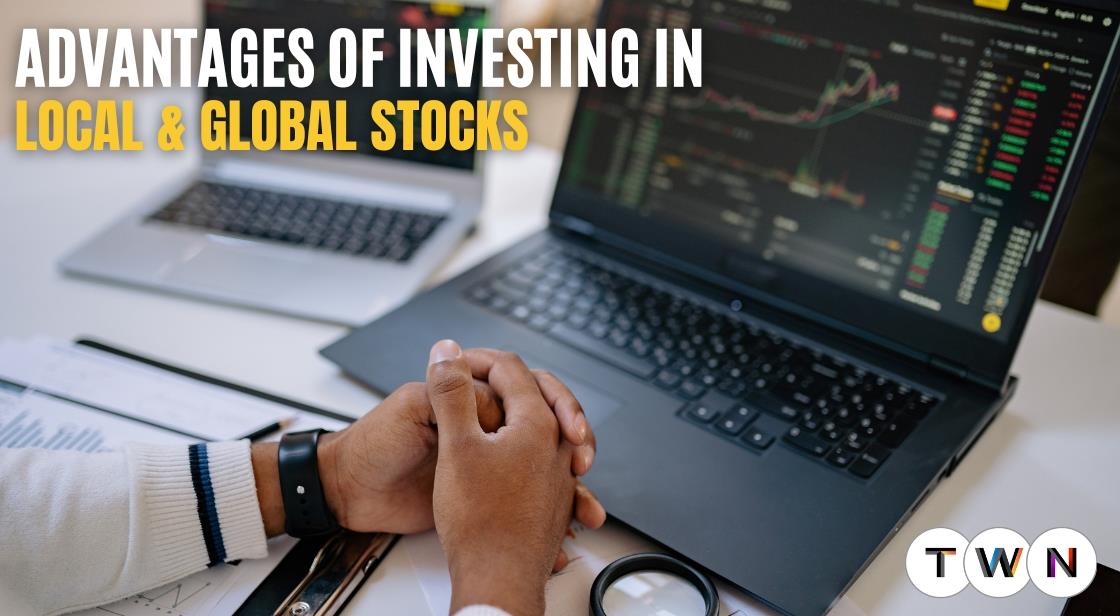Balancing Local and Global: How Diverse Should Your Profile Be?

Blog Post
As India's stock market reclaims its position as the fifth largest globally, it's crucial to consider the balance between local and global investing. Balancing the two markets enables Indian investors to leverage domestic growth opportunities while diversifying geographically, reducing risk, and tapping into the potential of emerging markets for attractive returns.
By investing in local Indian stocks, you can leverage your familiarity with the domestic market. The Indian economy's stability and growth potential, coupled with a range of sectors like information technology and pharmaceuticals, present attractive investment opportunities.
On the other hand, global stocks can diversify your portfolio geographically, providing exposure to different economic cycles and growth opportunities. Emerging markets such as China, Brazil, and South Korea offer enticing returns.
To strike the right balance, consider a diversified asset allocation strategy. Alternatively, Exchange-Traded Funds (ETFs) provide diversified exposure to various countries or regions. Opt for hedged or unhedged ETFs depending on your risk appetite and currency outlook.
By staying informed about economic trends and consulting with financial advisors, you can create a well-diversified investment plan that maximizes the benefits of local and global markets.
This article explores the advantages of both approaches and provides insights into striking the right balance.
At the end of May this year, India’s market capitalisation stood at $3.3 trillion (₹272 trillion. This has led to a reclamation of India's status as the world’s fifth largest stock market after having lost this spot to France in January.
It’s not surprising that foreign investors have since added $5.7 billion (₹469 billion) worth of Indian stocks after the country showed one of the highest GDP growth rates among the world’s largest economies.
With a stable earnings outlook from the local market, Indian stock market investors must carefully consider where to invest. That’s because the Indian stock market offers significant opportunities, but diversifying into foreign markets can nonetheless provide added advantages.
This article aims to help Indian investors understand the benefits of both local and global investing and how to strike the right balance.
Balancing Local and Global: How Diverse Should Your Profile Be?
-
Advantages of investing in local Indian stocks
Investing in local Indian stocks allows investors to leverage their familiarity with the domestic market, economic conditions, and regulatory framework. The Indian economy is among the top-performing economies of the world with a wide range of raw materials and a growing labour force. Investors who believe in the long-term growth prospects of India can benefit from the stability and growth potential of local stocks.
Furthermore, the Indian stock market encompasses a wide range of sectors, from information technology and pharmaceuticals to banking and energy. In the first week of June, all 13 major sectoral indexes of Indian stocks logged gains wherein high-weightage financials and information technology rose 0.30% and 0.78%, respectively. Investors can capitalise on these booming sectors by targeting specific indexes such as the Nifty 50 or sectoral indices like the Nifty IT Index or Nifty Pharma Index.
For instance, companies like Infosys and Sun Pharmaceutical Industries have a strong presence in their respective sectors, making them attractive investments.
Also Read: Best Mutual Funds To Invest In 2023 India
-
Advantages of investing in global stocks
Meanwhile, investing in foreign stocks allows Indian investors to diversify their portfolios geographically. Global markets provide access to companies from various sectors and regions, enabling investors to benefit from different economic cycles and growth opportunities — thereby lowering risk.
At the same time, investing in global stocks allows investors to tap into the growth potential of emerging markets. Countries such as China, Brazil, and South Korea have experienced rapid economic growth in recent decades, and their stock markets have delivered attractive returns.
These changes can be tracked daily on stocks trading charts that show the performances of multinational companies, such as Google, Amazon, Tesla, Alibaba and Intel.
These companies are compared by their average spread to help you place informed pending orders, and investors can explore the S&P 500 or the MSCI World Index to gain exposure to these markets.
Striking the right balance
To strike the right balance, investors can consider a diversified asset allocation strategy. This involves allocating a portion of their portfolio to both local and global stocks based on their risk tolerance, investment goals, and market conditions.
Research from the Economic Times suggests that a 10 to 20-year portfolio that’s composed of 80% Indian equity and 20% developed-market equity can provide returns ranging from 94% to 108%. Meanwhile, the volatility can range from 88% to 89% of Indian markets.
Otherwise, consider Exchange-Traded Funds (ETFs) that provide diversified exposure to different countries or regions. For instance, you can invest in the Nifty 50 ETF in India for exposure to the top 50 companies in the country while also allocating funds to international ETFs like the Vanguard Total Stock Market ETF or the iShares MSCI World ETF for global diversification.
Final Take note
However, that some global ETFs are denominated in foreign currencies. This means that you should first evaluate whether the ETF hedges currency risks or if the returns are affected by currency fluctuations, lest the fluctuations in exchange rates impact the value of your investments.
Examine the composition of the ETF's benchmark or index and look for key terms such as "currency hedged" or "unhedged" in the ETF's investment strategy description. Depending on your risk appetite and currency outlook, you may choose to invest in hedged or unhedged ETFs.
Stay informed about economic trends, company fundamentals, and geopolitical factors impacting different markets using market calendars on reputable news sites or economic calendars on trading platforms.
With research and expert advice from financial advisors, you can take advantage of the benefits of the different markets and create a well-diversified investment plan.
You May Like
EDITOR’S CHOICE












